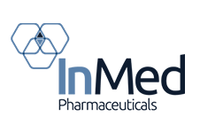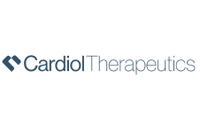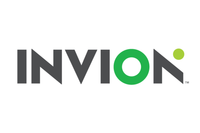
With Q1 2019 officially over, the Investing News Network shares a pharma market update on the biggest news and trends in the space.
The first quarter of the year for the pharmaceutical industry wasn’t particularly rife with surprises as drug pricing issues in the US continued to plague the industry. They are expected to persist throughout the year.
However, not all news for the pharma sector was bad. New and innovative therapies are making their marks in the industry, and these are poised to set the tone for 2019 and beyond. Companies are also shifting their focus to treating more rare and chronic diseases.
Drug pricing remains a hot topic of discussion and — ultimately — controversy, and different approaches are certainly on the way.
With the first quarter of the year over and Q2 2019 already in full swing, here the Investing News Network (INN) takes a look back on Q1 2019 and what drove the pharmaceutical market.
Pharma market update: Drug pricing issues persist
In an interview with INN, Irene Birbeck, partner with Clarkston Consulting, said that, while pharma companies are struggling to price certain therapies, it’s an exciting time to be in the industry.
“Frankly, it’s a less scary time to be a patient,” she said. “It’s [also] a less scary time to get a diagnosis, and, well, that’s thrilling.”
On the other hand, Birbeck said that one of the biggest problems for companies is figuring out a price tag for therapies so that research and development (R&D) can be funded. She used Novartis’ (NYSE:NVS) gene therapy Zolgensma as an example; it could potentially cost US$4 million for the one time treatment, according to a Forbes article from last November.
Zolgensma aims to target a deadly disease that impacts children who have spinal muscular atrophy type 1 and are thus at high risk of death by the age of two.
“What’s fascinating about drug pricing to me is that there is a bipartisan agreement on very little in [the US],” Birbeck said. “But on [therapy costs], there is a bipartisan agreement on the fact that drug pricing is an issue.”
In February, several executives from some of the top pharmaceutical companies testified in Congress about rising drug prices.
Led by Chairman Chuck Grassley, the hearing, dubbed “Drug Pricing in America: A Prescription for Change, Part II,” called Big Pharma to action to reduce astronomically high drug prices.
Executives from AbbVie (NYSE:ABBV), AstraZeneca (NYSE:AZN), Bristol-Myers Squibb (NYSE:BMY), Johnson & Johnson (NYSE:JNJ), Merck (NYSE:MRK), Pfizer (NYSE:PFE) and Sanofi (NASDAQ:SNY) appeared before the Senate Finance Committee.
“[Drug price increases are] not the result of a system too complicated for Americans to understand,” Senate Finance Ranking Democrat Ron Wyden said. “Drug prices are astronomically high because that’s where pharmaceutical companies and their investors want them.”
Pharma market update: FDA approvals
In the midst of the drug pricing plague, US Food and Drug Administration (FDA) approvals continued to make headlines throughout Q1, following on the heels of 2018’s banner year for approvals.
According to Nature.com, the FDA’s Center for Drug Evaluation and Research approved an impressive 59 novel drugs in 2018, higher than its previous record of 53 approvals in 1996. Novel drugs, or new molecular entities, are compounds that are the active part of a treatment and have not received approval from the agency.
So far this year, eight novel drugs had been approved as of April 12, with six of those coming in the first three months of the year, including ones for the companies Evolus (NASDAQ:EOLS) and Novartis. Evolus’ Jeauveau is a Botox competitor designed to treat severe glabella lines, commonly known as frown lines. Novartis has two, Egaten for treatment of fascioliasis, the result of parasites affecting the liver, and Mayzent for treatment of relapsing multiple sclerosis.
In the same vein, perhaps the most notable novel drug approval during the quarter was for Sage Therapeutics’ (NASDAQ:SAGE) Zulresso, which is for treating postpartum depression in adult women. The company said in a press release in March that the drug should be available sometime near the end of June, following a scheduling by the US Drug Enforcement Administration.
Other high-profile FDA approvals include one for Johnson & Johnson (NYSE:JNJ) division Janssen Pharmaceutica. The company got the nod from the agency for its nasal spray, Spravato, which is designed to treat severe symptoms of depression, but has received criticism due to its association with the anesthetic ketamine, which is also used as a recreational party drug.
“Regulatory authorities pay particular attention to the marketing and administration of drugs like [Spravato] so that they don’t become the next fill in the blank,” Birbeck told INN.
Birbeck further explained that depression can sometimes be difficult to diagnose and making sure patients are appropriately compliant can add a layer of complexity when it comes to treatments.
“Balancing those complexities, with that of the overall safety of the population because of [Spravato] being a drug that [has] potential to be abused … I think we’re going to continue to see those narratives play out,” she said.
Pharma market update: Beyond Q1 2019
Drug pricing and high profile FDA approvals stole the spotlight in the first quarter, and it is likely those trends will continue moving forward into the rest of the year. However, more companies are putting their efforts into rare diseases and R&D projects are also expected to bloom this year.
When it comes to specific areas, a report from Evaluate says that therapy development for Alzheimer’s disease will most likely see updates throughout 2019. Hepatitis B is another therapy area that could draw numbers by the end of the year with companies looking for a functional cure.
In its own report, Frost & Sullivan says digitally integrated solutions based on R&D efforts can be expected, and these will impact how clinical trials are done as well as the commercialization of new products.
“While the need for value-based-care grows along with strained profitability, Big Pharma needs to decentralize and outsource manufacturing of novel cell and gene therapies to contract development and manufacturing organization,” the report says.
Separately, an Iqvia Institute report released in January estimates that the global pharmaceutical industry will surpass US$1.5 trillion by 2023, growing a compound annual growth rate of between 3 and 6 percent during the forecast period. In the US, driving that growth will be brand pricing and an increase in new products, although that is counteracted with patents expiring and generics.
Vizient estimates that drug pricing will increase 4.28 percent for pharmaceutical purchases done between July 1, 2019, and June 30, 2020. Medication costs in addition to regulatory requirements will continue plaguing the industry.
Oncology medications, disease-modifying agents and immunomodulatory agents will be the biggest areas where money is spent.
“We are seeing a large amount of spending going into the same few categories. While we are seeing some increased competition for certain drugs, the effects of the slow uptake of adoption to biosimilars, natural disasters, exacerbation of drug shortages and reimbursement limitations have continued to drive up costs for providers,” said Dan Kistner, senior vice president of pharmacy solutions for Vizient.
In short, while it doesn’t seem like the story will change much for the pharma industry this year in terms of drug pricing, the fact that companies are targeting niche diseases and working towards strengthening R&D is promising — not only for the industry and its patients, but also for interested investors.
Don’t forget to follow us @INN_LifeScience for real-time news updates
Securities Disclosure: I, Jocelyn Aspa, hold no direct investment interest in any company mentioned in this article.
Editorial Disclosure: The Investing News Network does not guarantee the accuracy or thoroughness of the information reported in the interviews it conducts. The opinions expressed in these interviews do not reflect the opinions of the Investing News Network and do not constitute investment advice. All readers are encouraged to perform their own due diligence.



